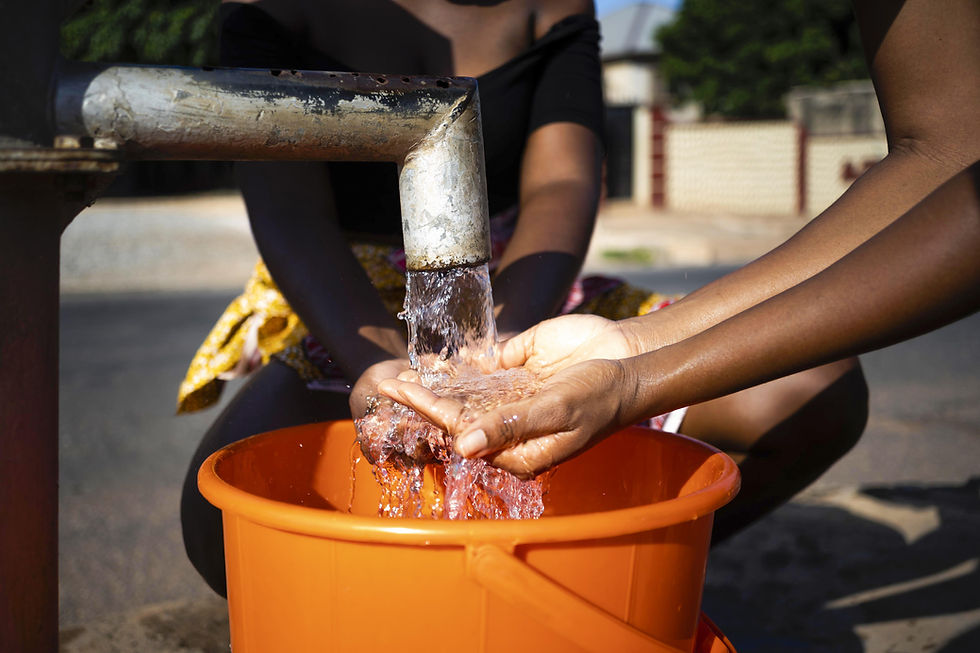Urgent Appeal Against In Situ Leach Uranium Mining in Namibia's Stampriet Artesian Basin
- SAUMA

- Jan 18, 2024
- 3 min read
Open Letter to the Members of Cabinet, Members of Parliament,
Standing Committees, Regional Governors, Councilors, Traditional
Authorities and the Namibian Public
Risks posed by the proposed In Situ Leach Mining of Uranium in the
Stampriet Artesian Basin, southeastern Namibia.

More than 99% of Earth's water is deemed unusable by humans and many other living organisms. It seems extraordinary that the water supporting all terrestrial life on our planet is so scarce (Source: National Geographic; North American and Australian groundwater databases). The water that sustains life falls within the safe guidelines for drinking water by the World Health Organisation, making it safe for human consumption.
The importance of the Stampriet Artesian Basin
The people, the animals and the economy of vast rural areas of semi-arid Namibia rely entirely on drinkable groundwater for their survival. They have no alternative. One such region is the Stampriet Artesian Basin below the Kalahari dunes of southeastern Namibia. The Stampriet Artesian Basin has served as a vital farming area for decades.

Discovery of Uranium in the Stampriet Artesian Basin
Analyses of water from boreholes in the Stampriet Artesian Basin show that the water outside the uranium orebody is safe to drink. Recently, Uranium has been discovered in the main underground, artesian aquifer of the Stampriet Artesian Basin.
The situation changes dramatically if the uranium were to be mined. Such mining, called in situ leaching, involves forcing sulphuric acid and other chemicals through boreholes into the uranium orebody located in the drinking-water aquifer, dissolving the uranium into the water and pumping it out again to recover the uranium. The leach solution in such a mine contains dangerous concentrations of dissolved uranium far above the WHO safe drinking-water guideline.
In situ leaching mines consist of thousands of injection and production boreholes spaced 20 - 30 metres apart over areas that can exceed 1,000 hectares in size. Presently, exploration licences for uranium cover 53% of the Stampriet Artesian Basin, an area of 3.3 million hectares, posing an imminent threat to the quality of the drinking water in the region.

Potential contamination within and beyond Namibia’s borders
In situ leach mining has the potential to massively contaminate one aquifer after another through bedrock fractures and old water boreholes that leak. Additionally, irrigation projects pump water from the main aquifer at rates of up to 100,000 litres per hour. This induces a very fast flow of water through the aquifer which can potentially draw water from an in situ leaching mine area and cause pollution of the aquifer well beyond the boundaries of the mine.
The Stampriet Artesian Basin extends into Botswana and South Africa where the same aquifers are pumped for drinking water. Pollution of the water in these neighbouring countries due to in situ leach mining in Namibia could lead to international litigation and huge compensatory expenses for the Namibian Government.
As a member of the United Nations, Namibia is bound by international conventions and resolutions on transboundary issues. Additionally, reports of pollution of underground drinking water by in situ leach mining would affect tourism and agriculture throughout Namibia and affect the entire nation’s reputation and agronomic economy.

An Environmental Impact Assessment has recently been concluded for four years of in situ leaching pilot plant test mining of uranium in the Stampriet Artesian Basin. If approved, this would be the first step toward pollution of the underground drinking water of the Stampriet Artesian Basin. The next step would be a tiny one to full-scale in situ leach mining and a national catastrophe.
We earnestly request that you carefully evaluate the environmental, social, and economic impacts of the proposed in situ leach mining and make decisions that align with the best interests of Namibia and its people. The Australian Best Practice Guide for in situ leach mines does not allow exploration for and mining of uranium in aquifers of drinking-water quality. The same common sense should apply in Namibia.
Mining of any kind must not be allowed in the Stampriet Artesian Basin.
WATER IS LIFE.
OUR LEGACY MUST BE FOR THE HEALTH, SAFETY AND
BENEFIT OF FUTURE GENERATIONS
Stampriet Aquifer Uranium Mining Association (SAUMA) Management Committee








We must fight against ISL at all costs, the Environmental laws in Namibia are there to protect against this kind of exploitation.
Not only is public health at risk, but also the long-term economy of the whole Central and Southern Kalahari system in Namibia. It would affect livestock production and export, vegetable and fruit production, and tourism. And we know how vulnerable tourism is. If a region of Namibia has contaminated groundwater, this will impact on tourism across the whole country. Also, any nuclear contamination of groundwater flowing across into Botswana and South Africa will result in huge litigation cases. The Russians will have left, and the Namibian government - and thus the taxpayers - will have to pay huge reparation costs. In-situ uranium leach mining would be a disaster for the Kalahari and for Namibia.
Government should put the lives of people first before profits
This is another very seriously sad read. My goodness anybody in their right minds should consider humanity s safety far beyond Uranium. If its not the oil industry threatening our country and its people ots the Uranium. It very very sad